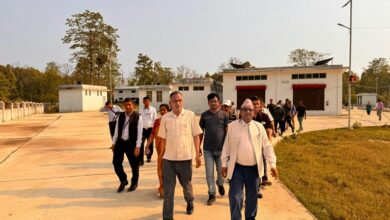Mutf_In: Quan_Infr_Gr_Ehxc3w

Mutf_In: Quan_Infr_Gr_Ehxc3w introduces a significant shift in technological paradigms. It combines quantitative data with infrastructure advancements to streamline operations across various sectors. This approach not only enhances organizational efficiency but also addresses critical challenges like interoperability and security. As Mutf_In gains traction, its implications for urban development and sustainability become increasingly relevant. What specific changes will it bring to industry standards, and how will it redefine the quality of urban life?
Understanding Mutf_In: An Overview
Mutf_In represents a significant domain within contemporary technological frameworks, encompassing various methodologies and applications.
This field presents a range of mutf_in applications that enhance data processing and communication.
However, it faces notable mutf_in challenges, including interoperability issues and security concerns.
Addressing these challenges is crucial for unlocking the full potential of mutf_in, enabling users to achieve greater autonomy and efficiency in their endeavors.
The Role of Quantitative Information
Quantitative information plays a pivotal role in the evolution of Mutf_In by providing a robust framework for data analysis and decision-making processes.
Through rigorous quantitative analysis, stakeholders can derive insights from complex datasets.
Furthermore, effective data visualization enhances comprehension, allowing for informed choices that promote autonomy.
Ultimately, the integration of quantitative information empowers users to navigate the intricacies of Mutf_In with confidence.
Infrastructure Innovations and Their Impact
As advancements in infrastructure continue to reshape industries, their impact on systems like Mutf_In becomes increasingly significant.
Innovations such as smart cities promote efficiency and connectivity, fostering sustainable development. These advancements enable better resource management and enhanced quality of life for citizens.
Consequently, the integration of cutting-edge infrastructure solutions is essential for achieving long-term societal benefits while supporting the evolving needs of urban environments.
Case Studies: Mutf_In in Action
The integration of innovative infrastructure solutions has led to notable applications across various sectors, exemplified by the implementation of Mutf_In.
These Mutf_in applications demonstrate enhanced efficiency and flexibility in operations.
However, they also present Mutf_in challenges, including integration difficulties and scalability issues.
Addressing these challenges is crucial for maximizing the potential benefits of Mutf_In in diverse environments, fostering greater autonomy and effectiveness.
Future Trends and Implications
While many sectors have begun to embrace Mutf_In solutions, future trends indicate a potential shift towards more adaptive and intelligent systems that leverage advancements in artificial intelligence and machine learning.
Predictive analytics will enhance decision-making, while robust data integration will ensure seamless access to information.
These developments promise to redefine operational efficiency, empowering organizations to respond dynamically to emerging challenges and opportunities.
Conclusion
In conclusion, Mutf_In signifies a pivotal shift in the integration of quantitative information and innovative infrastructure. It enhances operational efficiency, fosters adaptability, and promotes sustainability. By addressing interoperability and security challenges, it not only redefines industry standards but also elevates the quality of urban life. As organizations harness its potential, they embrace informed decision-making, cultivate connectivity, and drive future advancements. Thus, Mutf_In stands as a beacon for progress in a rapidly evolving technological landscape.




